Milestones in European Construction
-
1945 - From war to peace
At the end of the World War II, Europe was destroyed, left in ruins, and a lot of people were killed. Everything needed to be rebuilt and it was imperative that the European nations prevent another World War. The difficulty was finding a way to build conditions of a lasting peace between countries that had been bitter enemies for years on end, to build healthy foundations for the future relations between those States.
The biggest problem lay in the relationship between France and Germany, who had been arch enemies for decades. The primary objective of European reconstruction was to create a lasting bond between those two countries, a bond that would spread between all the free countries of Europe, in order to build a permanent, peaceful community together.
-
1950 - The Schuman Declaration
On May 9, 1950, Robert Schuman, the French Minister for Foreign Affairs stated: “Europe will not be made all at once, or according to a single plan. It will be built through concrete achievements which first create a de facto solidarity.”Along with Jean Monnet, Schuman made a proposal (known as the Schuman Plan) to pool France's and Germany's two most important resources-- coal and steel-- together, into an organisation that would also be open to other European countries.
-
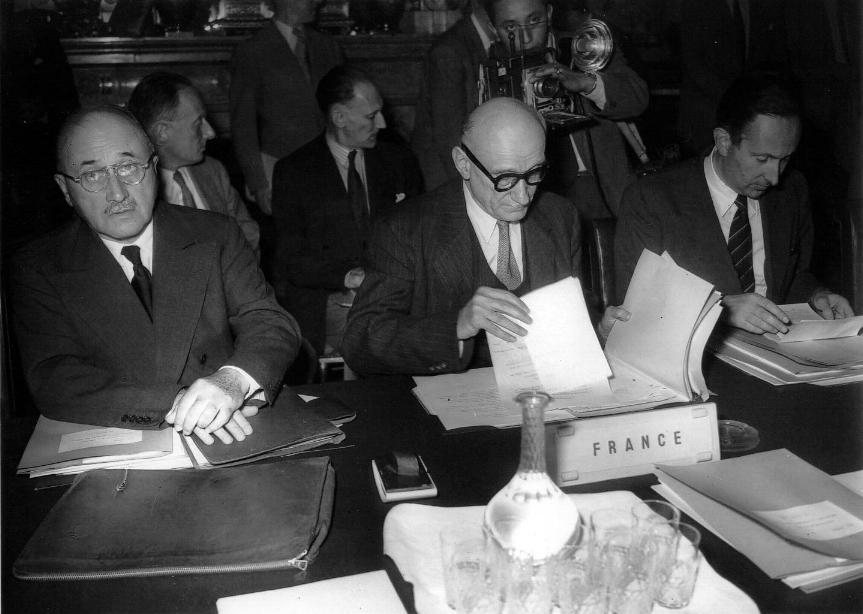
1951 - The European Coal and Steel Community
This plan was signed on April 18, 1951, with the Treaty of Paris, establishing, the first European community, the ECSC: the European Coal and Steel Community. The decisions of this body would be made by a higher authority, a cooperative, multi-national body whose members were appointed by the member governments. Six countries signed the treaty: Germany, Belgium, France, Italy, Luxembourg, and the Netherlands. The United Kingdom refused to join and challenged the nature of this new supernational European Community.
The Schuman Plan was a milestone in European integration and construction because it marked the beginning of reconciliation between France and Germany, a vital first step to building any international organisation in Western Europe. War between France and Germany was no longer possible, because the two countries had to cooperate to produce weapons, or any other materials, from their shared steel and coal.
-
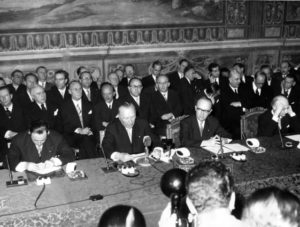
1957 - The European Economic Community (EEC) and the European Atomic Energy Community (EAEC)
Robert Schuman’s proposal gave birth to a community that specialised in managing coal and steel, which was very important, but also quite limited. To further European integration, the six member countries decided to enter into economic cooperation as well. With this goal in mind, the same six countries signed the Treaty of Rome, which established the EEC (the European Economic Community), and Euratom (the European Atomic Energy Community).
The goal of the EEC was to create a large common market in Europe characterised by a customs union and the gradual removal of tariffs, so that people and goods could move freely betwen all the member countries. The EEC also sought to implement common policies in all of the member countries, particularly in the field of agriculture. The principle aim of the European Atomic Energy Community, meanwhile, was the joint development of peaceful atomic energy in Europe.To facilitate the work of the fledgling European Community, four new institutions were established in 1958: the European Commission, a Council of Ministers, a Parliamentary Assembly (later titled the "European Parliament"), and a Court of Justice.
-
1968 - Elimination of customs duties
By July 1, 1968, the customs union had become a reality; tariffs had completely disappeared between the member countries.
The effect was amazing. Between 1957 and 1970, intra-community trade increased six fold, and the EEC’s trade with the rest of the world had tripled.
Consumers benefited directly from the union as well, because they were offered an increasingly varied range of imported products. The European community was becoming a reality. -
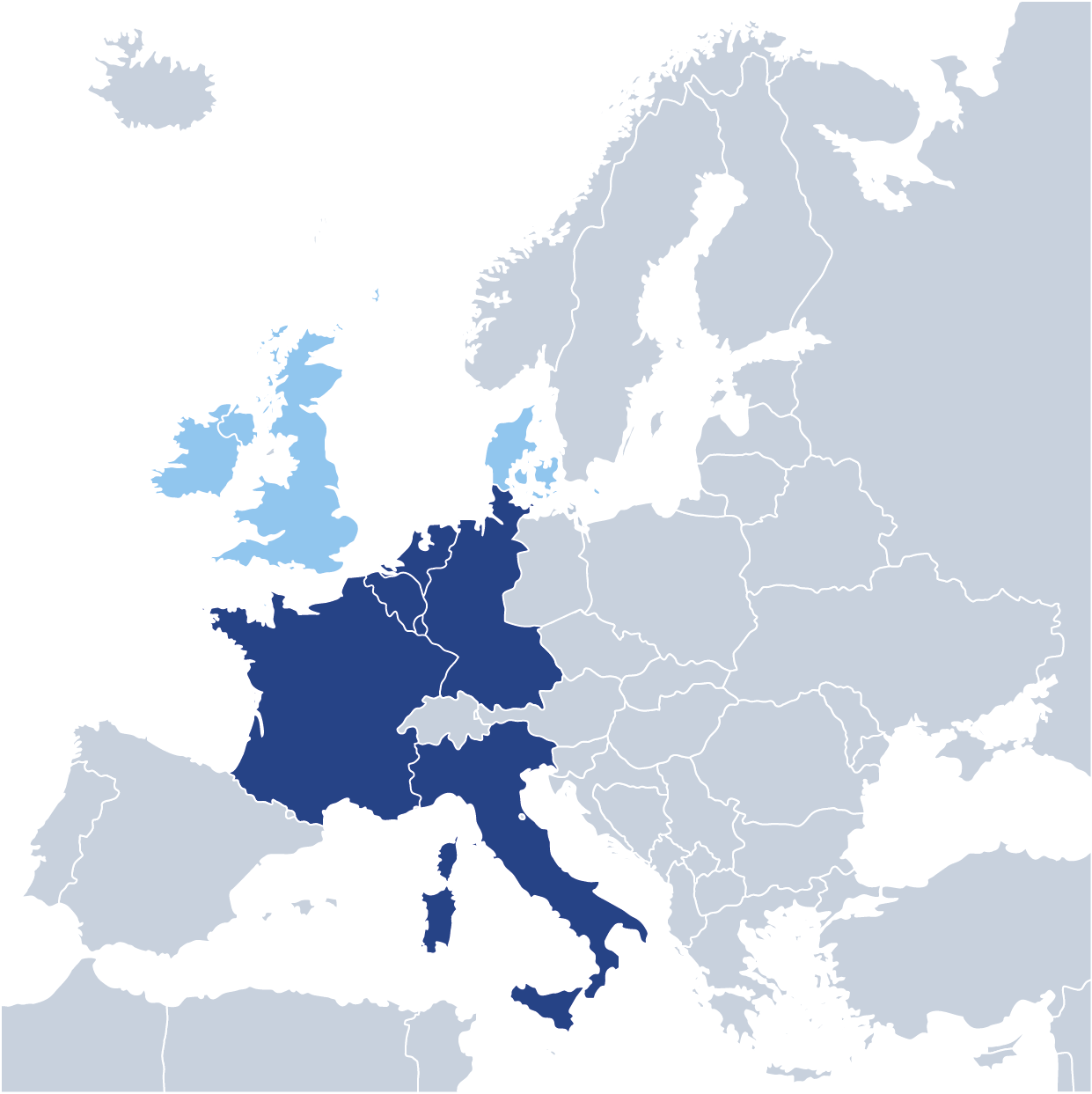
1973 - Enlargement to countries of Northern Europe
The first enlargement of the EEC was in 1973. The United Kingdom, Ireland and Denmark entered into the EEC, increasing the number of member states from 6 to 9. Norway rejected membership in a referendum.
-
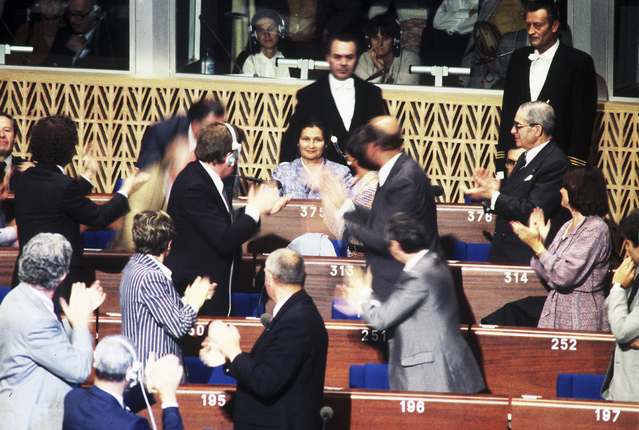
1979 - The European Parliament's first elections with universal suffrage
In June 1979, the deputies of the European Parliament, then chosen by the national Parliaments of the different countries, are elected for the first time to direct universal suffrage by the European citizens.
-
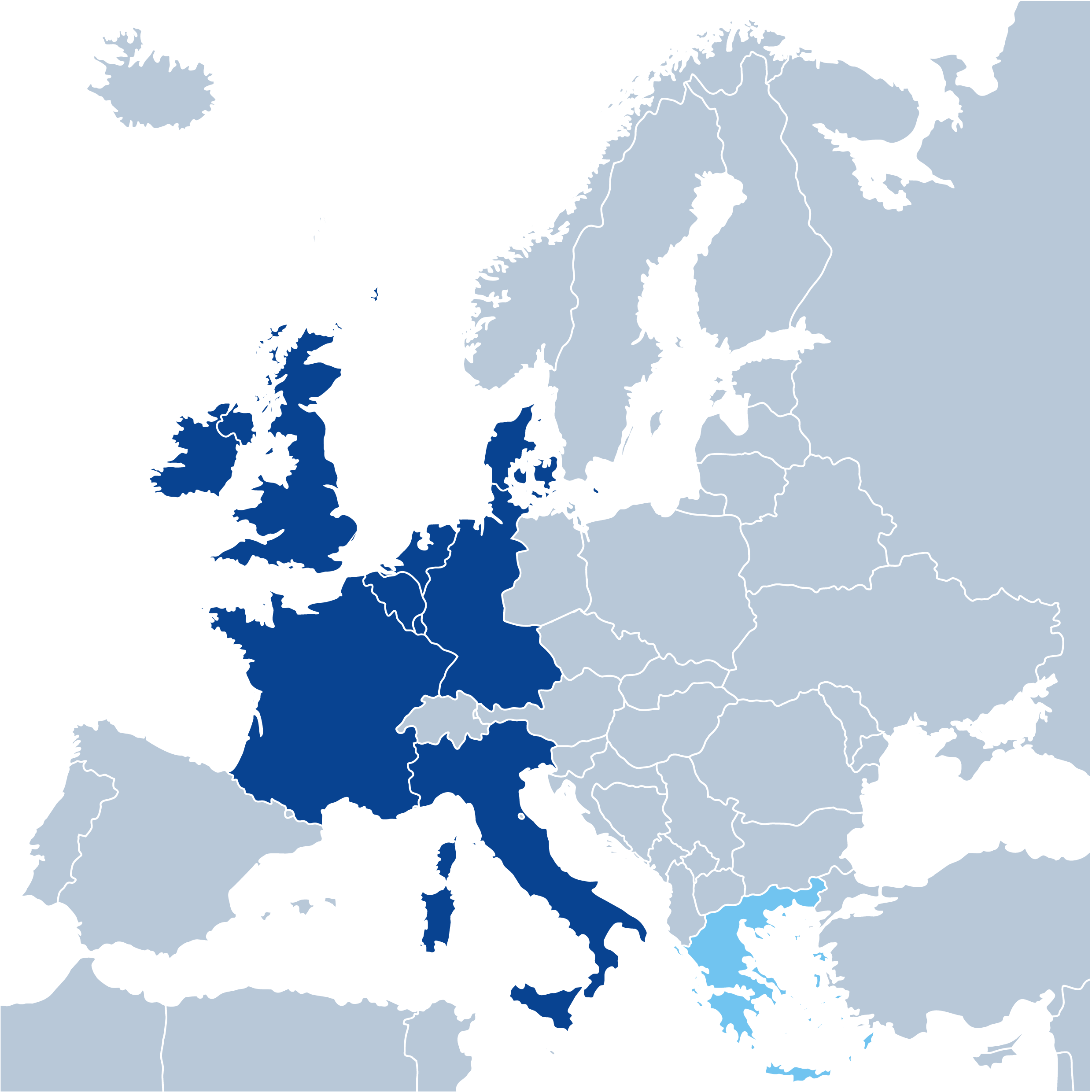
1981 - The accession of Greece in European community
After the fall of the regime of the Colonels, Greece enter in the European Community in 1981.
-
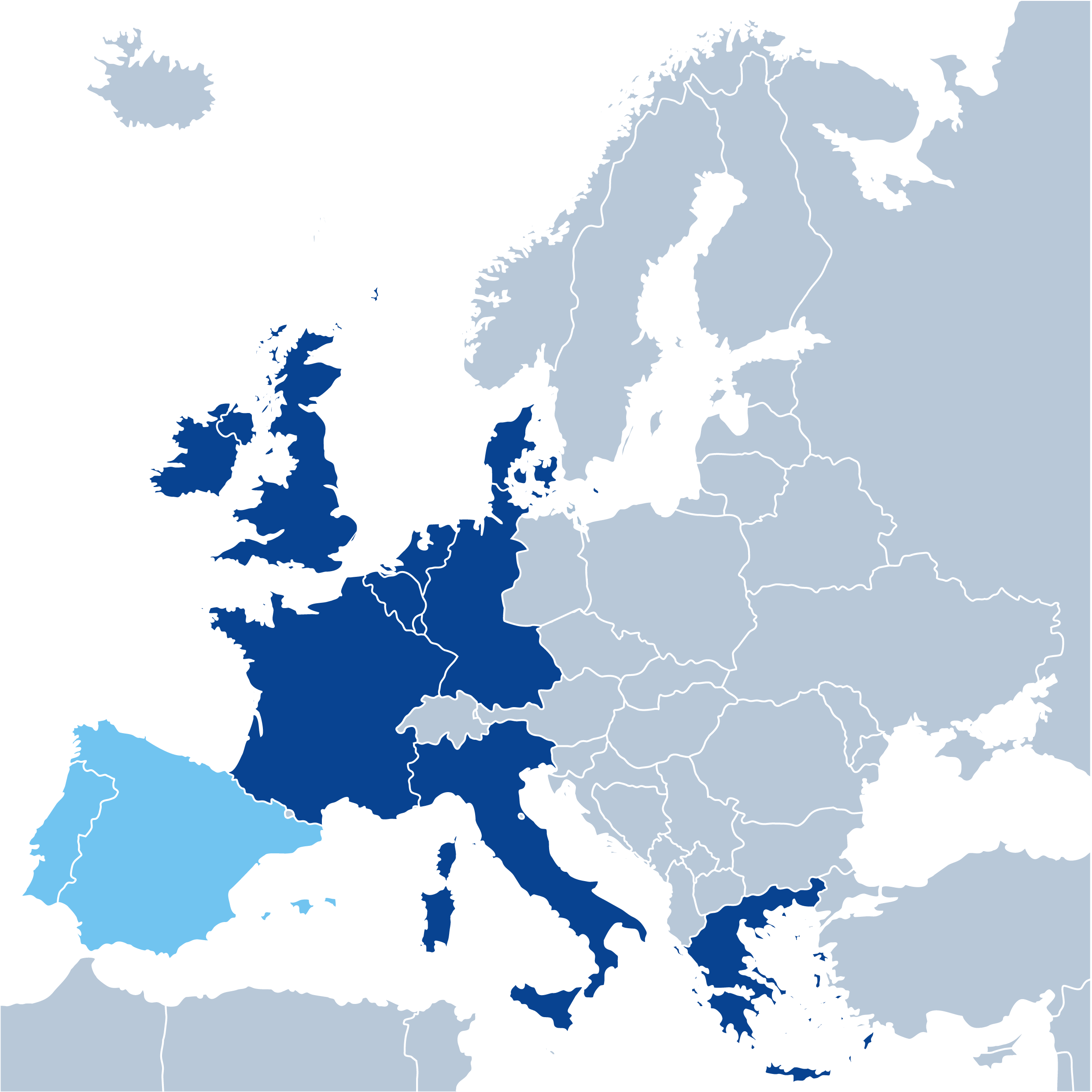
1986 - Enlargment to countries of Southern Europe and the Single European Act
Greece is followed by Spain and Portugal in 1986. This brought the number of member countries up to 12.
-
1986 - The Single European Act (SEA)
In 1986, the Single European Act (SEA) sets a deadline for the creation of the Single Market: January 1993. This new treaty required the member states to commit to establishing a Europe without internal borders by that date. No restrictions, whether regulations or taxes, could delay the establishment of a genuine European internal market.
Some 300 measures were taken to eliminate the various obstacles impeding the free circulation of goods and people: physical barriers, technical barriers, fiscal barriers, etc. -
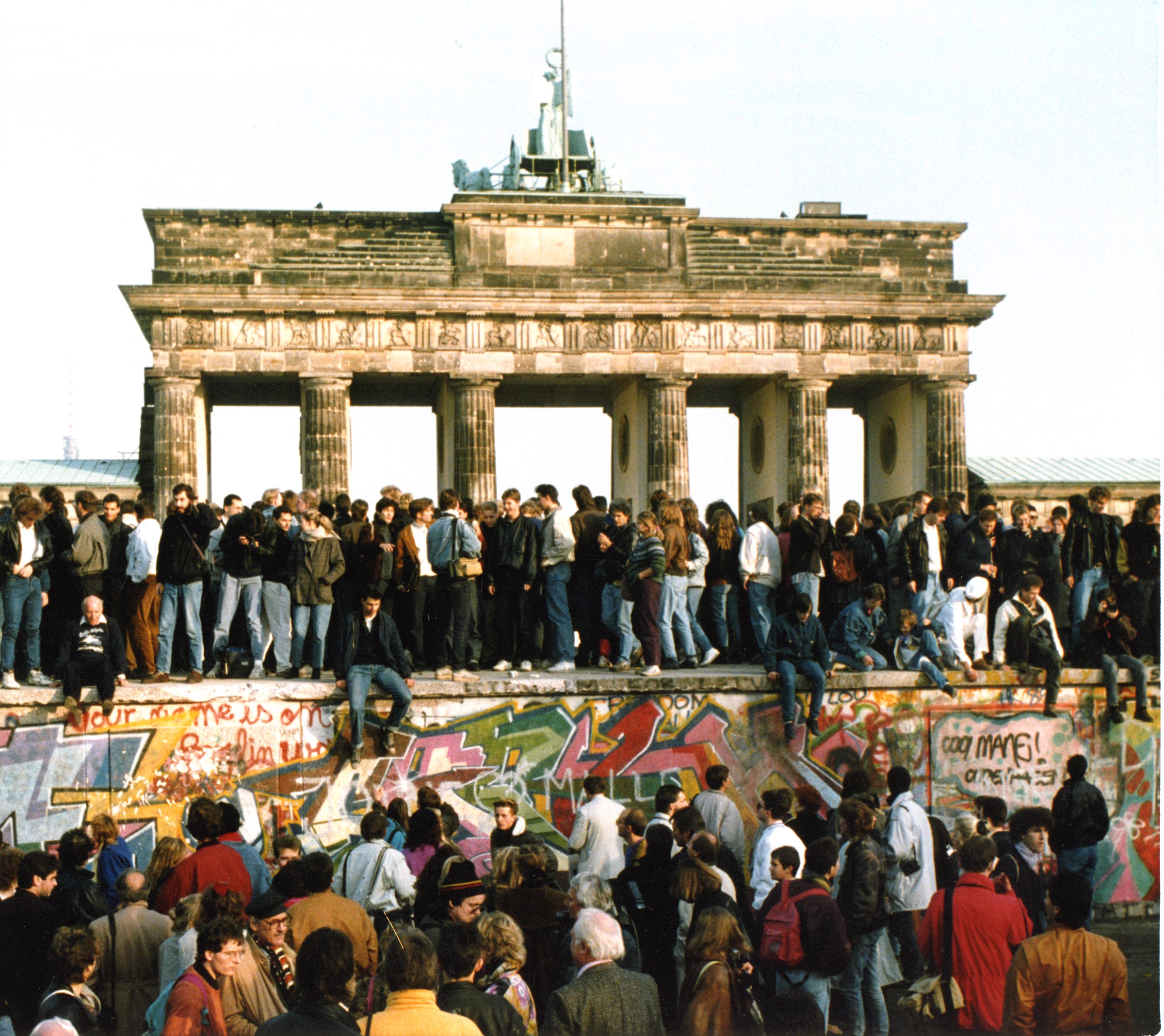
1989 - A new order, the fall of Berlin Wall
-
1992 - The Maastricht Treaty
The Maastricht Treaty, signed on February 7, 1992, took European construction to a new level. It established the European Union (EU) and added a political dimension to the Community. It sets out clear rules to implement the future single currency, foreign and security policy as well as a closer cooperation regarding justice and domestic affairs.
Another innovation of the Maastricht Treaty was the creation of EU citizenship. From then on, every person holding the nationality of a EU country automatically became a citizen of the EU. Moreover, the EU citizenship provided rights, such as the right to move and reside freely within the EU, the right to vote for and to stand as a candidate in European Parliament and municipal elections, the right to register a complaint with the European Ombudsman, etc. -
1993 - The adoption of Copenhagen criteria
The Single Market finally became a reality on January 1st, 1993. The year 1993 hinged on the process of enlargement of the European Union, which was entering into a new phase. The European Council of Copenhagen, in June of 1993, defined the criteria that any Candidate Country wishing to enter the European Union must meet before its accession. These so-called "Copenhagen Criteria" were aimed mainly at the countries of Eastern and Central Europe, who, since the fall of the Berlin Wall in 1989, were seeking to become part of the European Community.
There are three main Copenhagen Criteria: political, economic, and compliance with community rights. -
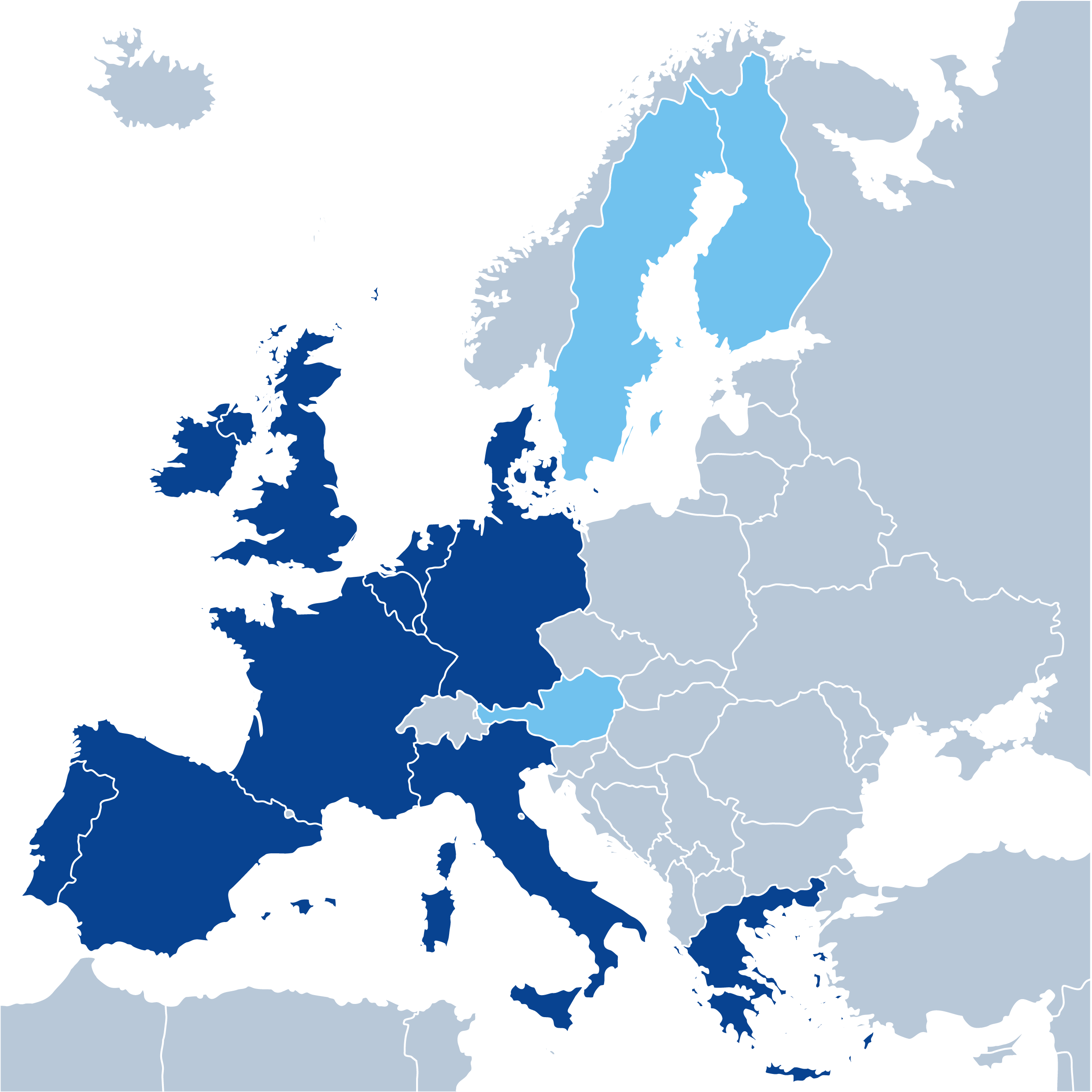
1995 - Enlargment of the EU and the Schengen Agreement
It was also in 1993 that accession negotiations started with Austria, Finland, and Sweden. These negotiations ended one year later and on January 1, 1995, the European Union welcomed three new members, making it a Europe of 15.
The Schengen Agreements enter into force in seven Member States: Germany, Belgium, Spain, France, Luxembourg, the Netherlands and Portugal. The travellers, of all nationalities, can go in these countries without identity check to the borders. Other countries since joined the Schengen zone.
-
1997 - Treaty of Amsterdam
On October 2, 1997, the Treaty of Amsterdam was signed. This new treaty gave greater importance to human rights and the rule of law in the EU. It also improved the organisation of intergovernmental cooperation between the Member States of the European Union with a stronger position for the European Parliament. It also brought new areas to the community field, namely police, justice and employment.
The Amsterdam Treaty created “a space of freedom, security and justice” within the European Union. The Schengen Convention, signed by 13 member states (Austria, Belgium, Denmark, Finland, France, Greece, Italy, Luxembourg, Netherlands, Portugal and Sweden), allowed free movement of persons without border control and organised police cooperation between the Member States. The Schengen Convention was completely integrated into the Amsterdam Treaty and therefore applied to all of the Member States of the European Union. Special conditions apply, however, for Ireland and the United Kingdom (who have still not signed the Convention), as well as for Denmark.
The Treaty of Amsterdam also introduced. for the first time, the concept of “enhanced cooperation,” an idea that allowed a limited number of able and willing Member States to move forward in deepening European construction. The treaty entered into force on May 1, 1999.
-
2001 - Treaty of Nice
The Heads of State or Government agreed on a new treaty - the Treaty of Nice - during the European Council in Nice on December 7-11, 2000. This treaty was signed on February 26, 2001, by 15 countries. Its primary aim was to change the institutional and decision-making processes of the European Union, to allow for the enlargement to 25 Member States. The Treaty of Nice became effective on February 1, 2003.
-
2002 - Introduction of the euro
Since January 1st, 2002, the Euro is the means of official payment in 12 of 15 Member states (alone Denmark, Sweden and the United Kingdom are not part of the euro area). More than 80 thousand million coins are put into circulation. Negotiations for a European single currency had already begun in 1993 with the treaty of Maastricht.
-
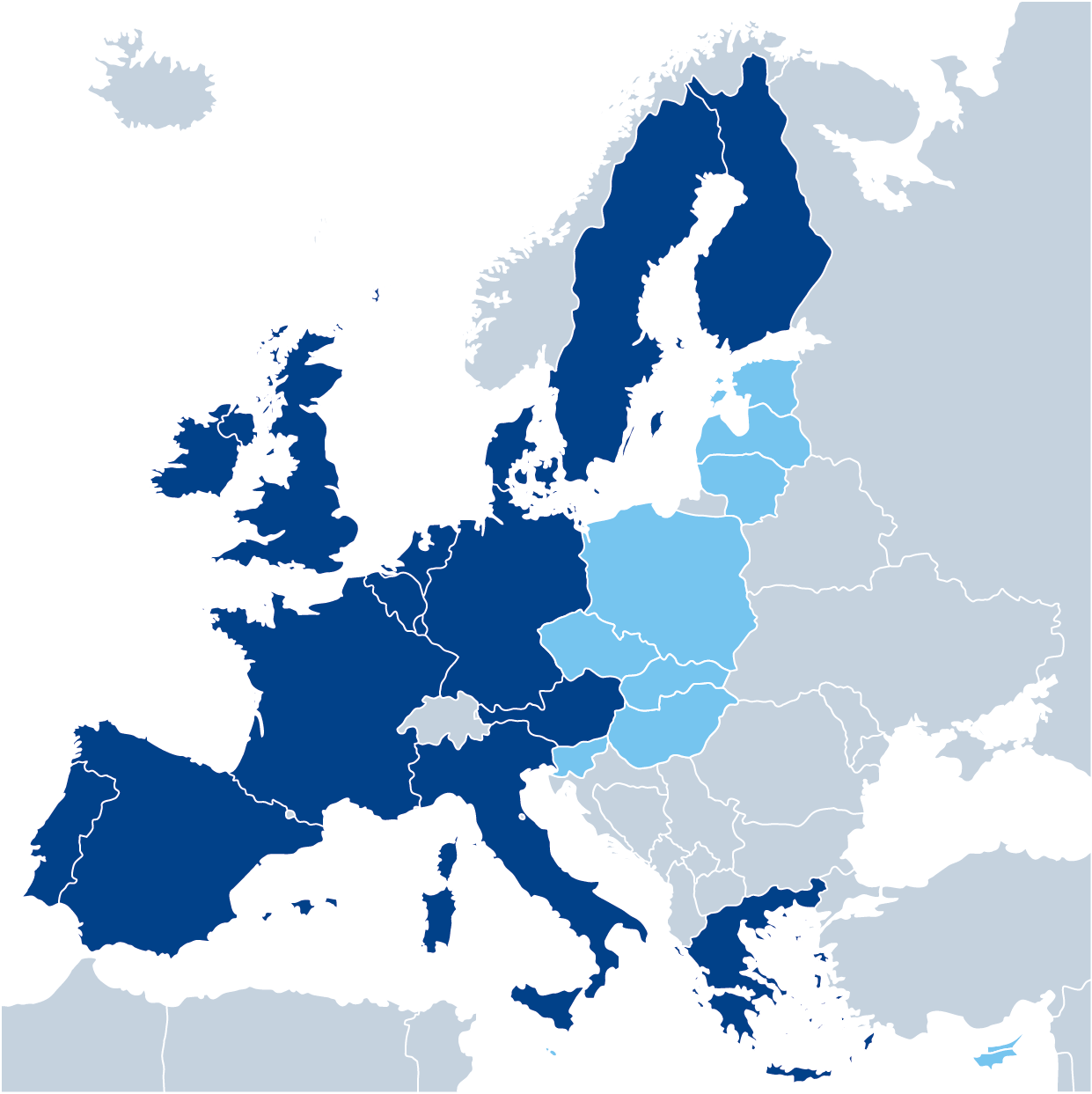
2004 - Historical enlargment of the EU and a new treaty
After a long process of negotiations between the Union and individual countries, ten new countries joined the European Union: Cyprus, Estonia, Hungary, Latvia, Lithuania, Malta, Poland, the Czech Republic, Slovakia, and Slovenia.
On October, 29th 2004, the 25 EU countries signed a new treaty: the Treaty Establishing a Constitution of Europe. This text offered a series of measures to make the Union more transparent, more efficient, and closer to its citizens. It aims at better organising the decision-making and management process in all the 25 EU countries, and even more. The Treaty was then rejected by France and the Netherlands in 2005. All EU State Members had to ratify the treaty though. Following the rejection, EU leaders started to consider reforming the EU treaties and its future.
-
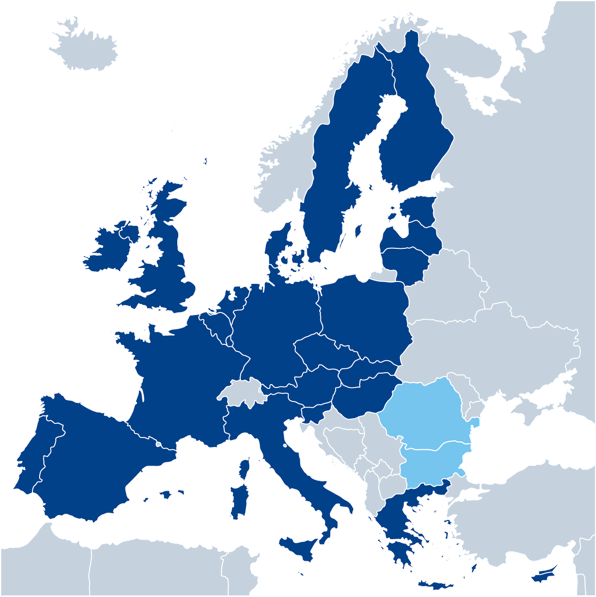
2007 - A new enlargment and the Treaty of Lisbon
After signing their accession treaty on April 25, 2005, Bulgaria and Romania joined the EU on January 1, 2007. EU Member States are now 27.
The fate of the constitutional process was finally clarified by the European Council on June 21 and 22, 2007. It called for an Intergovernmental Conference (IGC) to draft a "Reform Treaty," which introduced some technical and institutional changes.
The "Reform Treaty" was signed on December 13, 2007, in Lisbon. The Treaty of Lisbon entered into force on December 1, 2009, after ratification by all the Member States of the European Union. Many elements in the text of the Constitutional Treaty were included in the Treaty of Lisbon, it specified the appointment of a permanent president of the European Council, a High Representative of the Union for Foreign Affairs and Security Policy, introduced a bigger role for national parliaments and a citizen’s right initiative. -
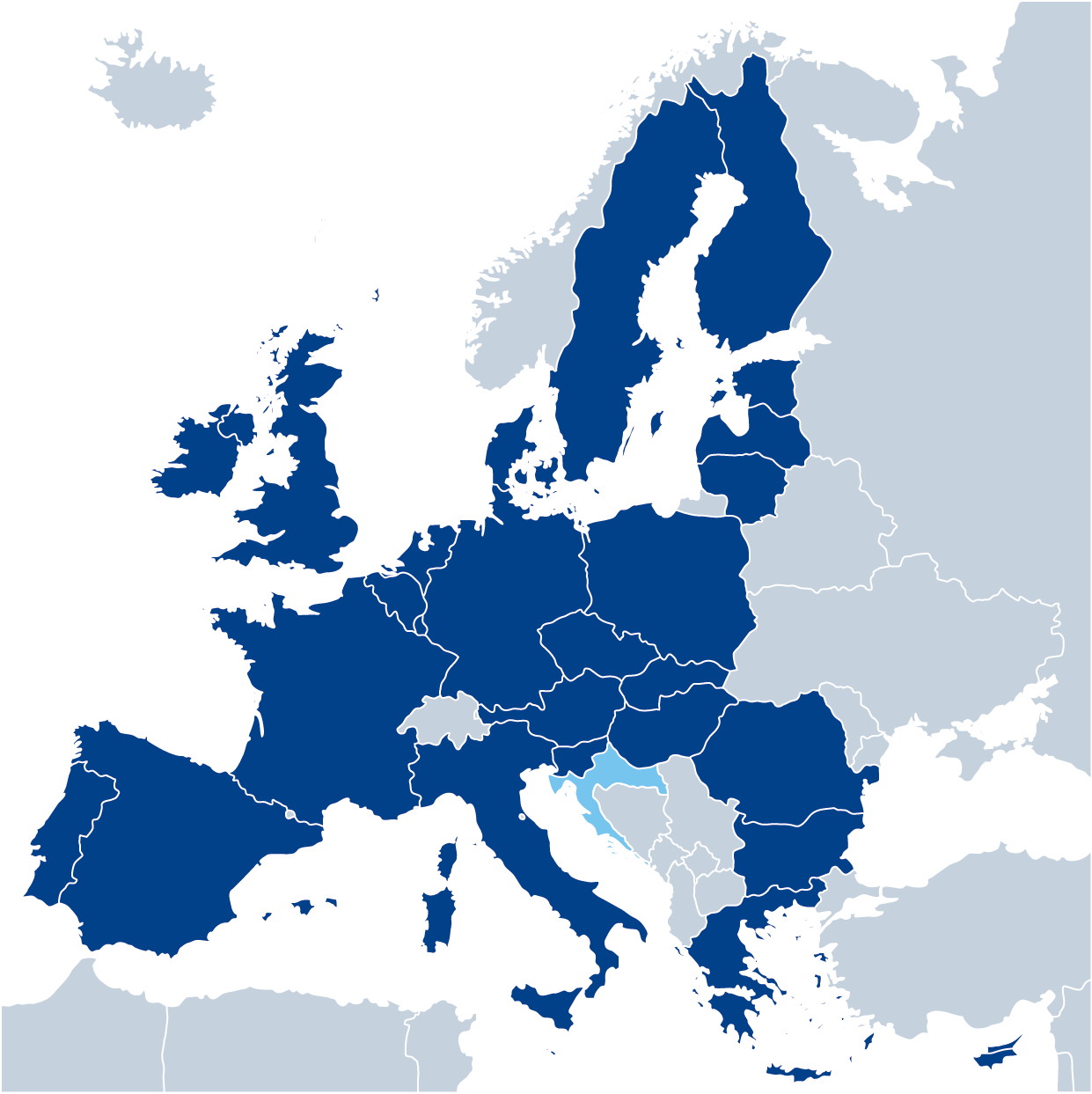
2013 - Croatia joins the EU
On July 1, 2013, Croatia became the most recent country to join the European Union, making it a Union of 28.
-
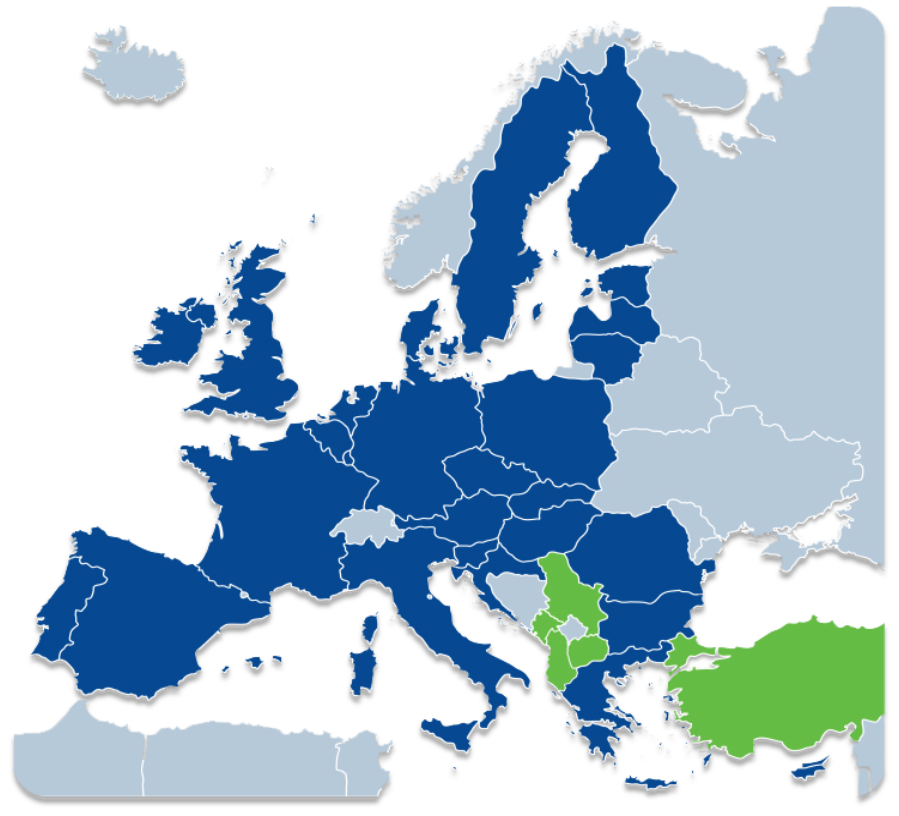
Current candidates for membership
Five countries are currently candidates for membership: Albania, the Former Yugoslav Republic of Macedonia, Montenegro, Serbia, and Turkey.
2 other countries are considered to be "potential Candidate Countries" by the European Council: Bosnia-Herzegovina since 2003, and Kosovo since 2008.
Negotiation talks were opened on 3 October 2005 for Turkey. The opening of accession negotiations took place in June 2012 for Montenegro.
Negotiations are held with each candidate, in compliance with a framework of negotiations defined by the European Council, upon the Commission’s proposal.
Joining the EU becomes effective as soon as the negotiations are over and following the ratification of the Acts of Accession by all EU Member States as well as the country in question. -
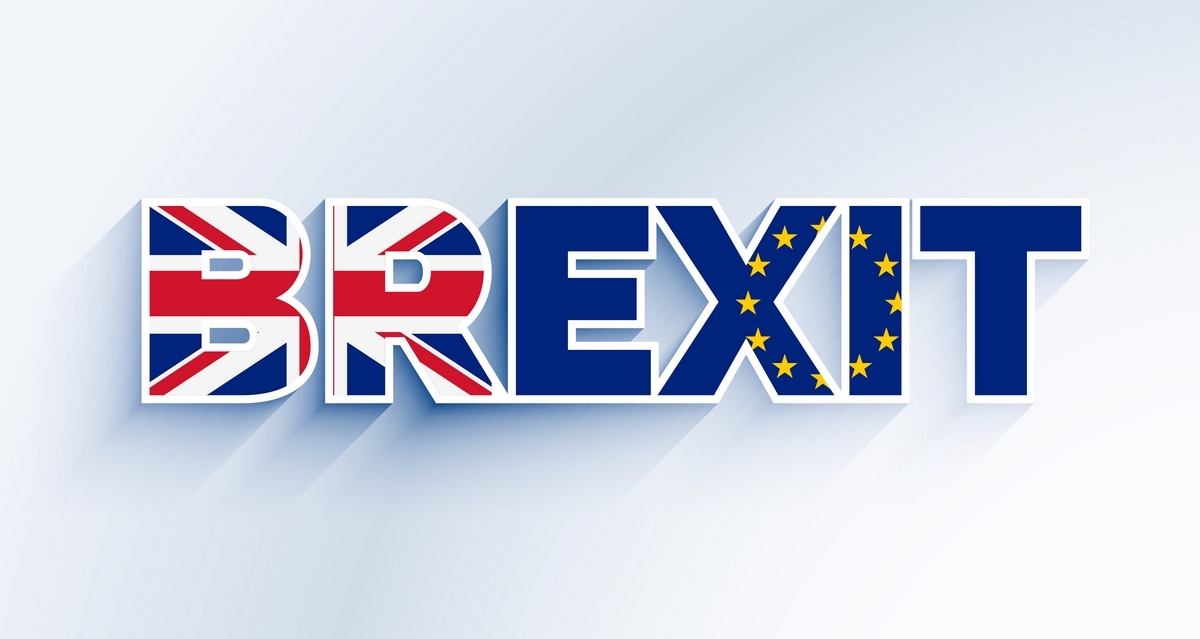
Brexit
On June 23 2016, a referendum was held in the UK to decide whether it should leave or remain in the European Union. Leave won by 51.9%. The UK invoked Article 50 of the Treaty on European Union (TEU) which began the member state's withdrawal from the EU. British political leaders launched the process of leaving the EU on March 29 2017.
From this date, the EU and the UK have two years to negotiate and reach a withdrawal agreement.The UK should have left the EU on March 29 2019. Upon the UK’s proposal, the European Council decided to grant an additional period of negotiation, during which the withdrawal agreement get by Theresa May in November 2018 should be ratified. On April 10 2019, the 27 EU leaders agreed to postpone Brexit on October 31 2019, for the latest. However, the UK could have left before this date if the withdrawal agreement was ratified by the UK and the EU. To make a long story short, the UK is still an EU Member State and will vote in European elections, just like other EU Member States.
The UK has left the EU on 31 January 2020, thus the transition period stared .
On 27 April 2021 the European Parliament gave final approval to the EU-UK Trade and Cooperation Agreement. On 29 April 2021 the European Council approved the conclusion of the agreement by way of a Council Decision. As a result, the agreements between the UK and the EU came into force on 1 May 2021. This was the last official step in the formalising the new relationship between the EU and the UK.
-
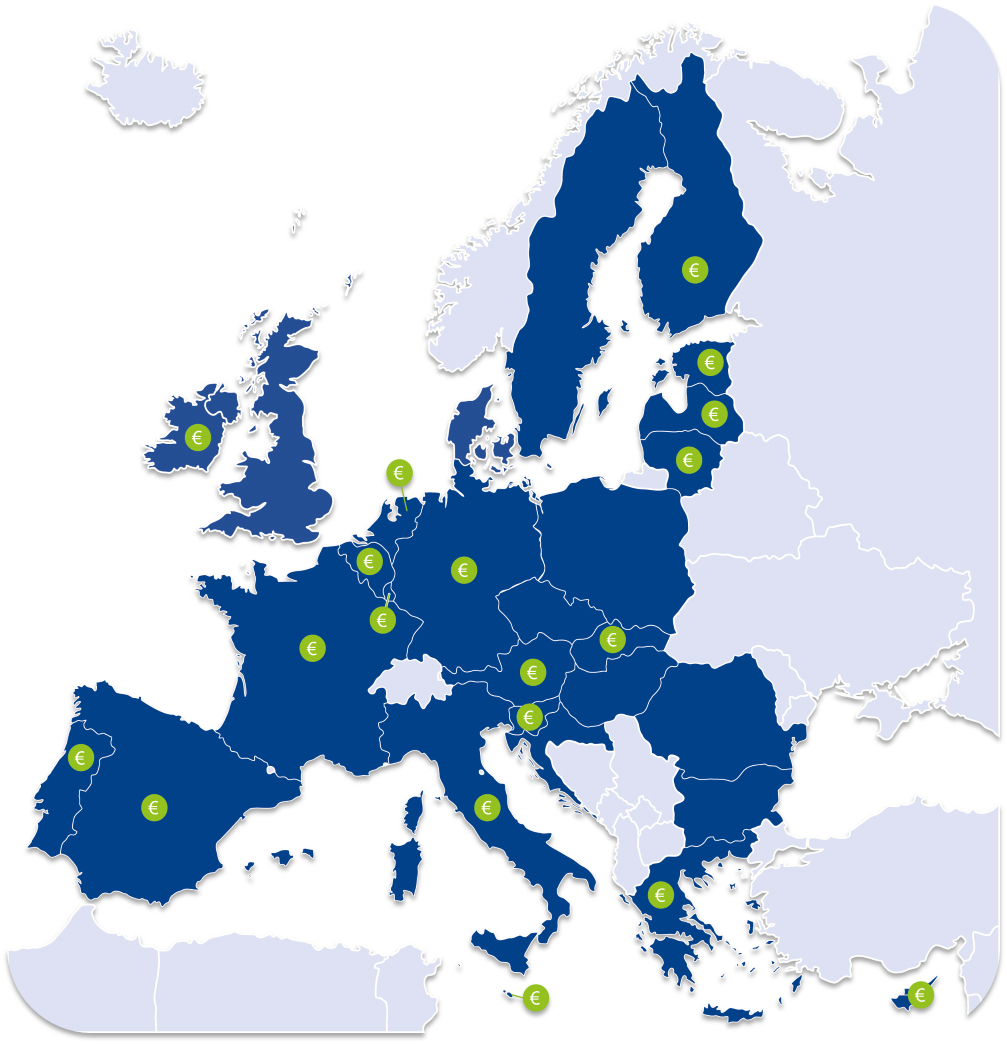
Euro Zone
20 EU Member States are in the Euro Zone.
-
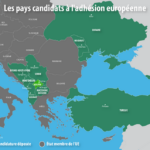
Countries Currently Seeking EU Membership
Nine countries are currently candidates for EU membership: Albania, Bosnia and Herzegovina (since December 2022), North Macedonia, Moldova (since June 2022), Montenegro, Serbia, Turkey, Ukraine (since June 2022), and Georgia (since December 2023).
Another country, Kosovo, is considered a "potential candidate country" by the European Council.
The negotiation process is conducted individually based on a negotiation framework defined by the European Council on the proposal of the Commission.
EU membership becomes effective once the negotiations are concluded and the accession agreements have been ratified by all EU member states as well as by the candidate country.
-
The War in Ukraine

© Commission européenne The war in Ukraine, triggered by the Russian invasion in February 2022, has profoundly shaken Europe and the world. Rooted in historical tensions and political differences, this conflict has resulted in thousands of deaths and millions of displaced people. Critical infrastructure, such as hospitals and schools, has been severely damaged. The European Union and its member states strongly condemn this brutal aggression by Russia. In response, the EU has taken decisive and severe measures, including:
-
Targeted sanctions against Vladimir Putin and other Russian political figures.
-
Economic sanctions affecting the finance, energy, transport, and technology sectors.
-
The suspension of visa facilitation for Russian diplomats and officials.
Moreover, the EU has used exceptional net profits generated by the immobilization of Russian assets to support the Ukrainian armed forces, its defense industry, and its reconstruction. These sanctions and measures aim to weaken Russia’s economic base, deprive it of essential technologies and markets, and significantly reduce its capacity to continue the war. Despite diplomatic efforts, no lasting ceasefire has been achieved. This war raises crucial questions about global sovereignty and security while disrupting international energy and food markets.
-
-

The European Elections
The 2024 European elections, scheduled for June 9, represent a crucial moment for the European Union. Citizens from the 27 member states will go to the polls to elect new Members of the European Parliament, influencing the political and legislative direction of the EU for the next five years. These elections come at a time of significant challenges, such as the war in Ukraine, the climate crisis, economic tensions, and migration issues. The results will determine the composition and political orientation of the Parliament and reflect the concerns of European citizens. Key campaign themes include the energy transition, migration management, environmental protection, and post-pandemic economic recovery. These elections are also seen as a barometer of public opinion on the future of European integration and the necessary reforms to meet citizens' expectations. This year’s vote is therefore essential not only for shaping future policies but also for strengthening democracy and cooperation within the EU.
For more information on the candidates and their programs, please visit: https://programme-candidats.interieur.gouv.fr/
